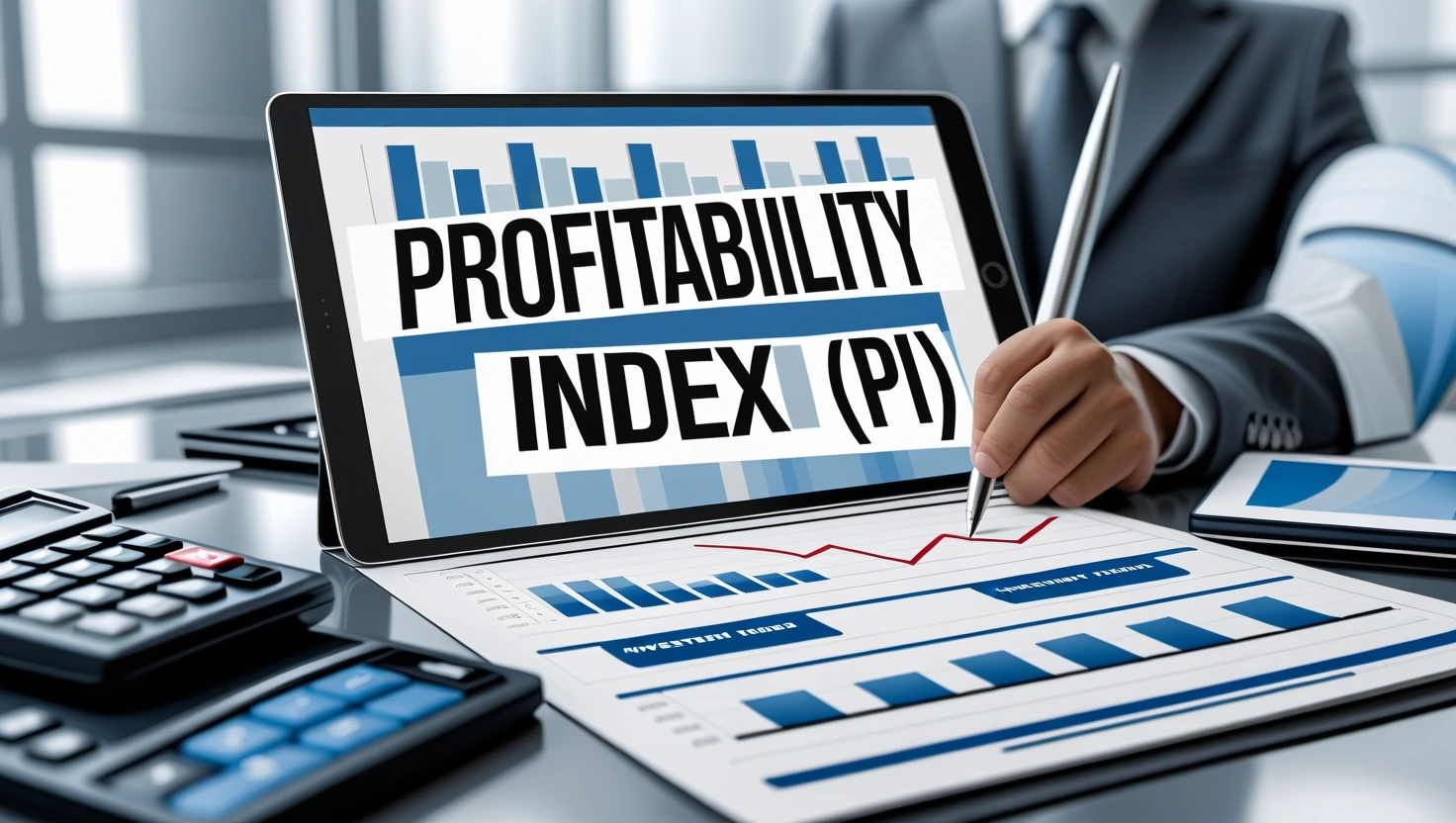
What is the Profitability Index? #
Running a small business means making smart choices about where to invest your money. The Profitability Index (PI) is a simple tool that helps business owners decide which projects give the best returns. The sentence compares the expected earnings of a project to the money needed to start it. This way, businesses can wisely use their resources and grow in a strong, sustainable way.
Why is the Profitability Index Important for Small Businesses? #
For small businesses, every rupee counts. Making the wrong investment can mean substantial financial losses, so it’s important to choose wisely. The Profitability Index helps owners pick projects that will make the most profit. This means they can avoid poor investments and use their money where it will have the biggest impact.
How the Profitability Index Improves Business Efficiency #
The Profitability Index doesn’t just help with picking investments. It also helps businesses use their resources wisely. If you know which projects will bring in the most profit, you won’t waste money on things that don’t help your business grow. This makes decision-making easier and strengthens your company’s financial health.
Key Features of the Profitability Index #
The formula for the Profitability Index
The formula for the Profitability Index is simple:
PI = Present Value of Future Cash Flows / Initial Investment Cost
Using this formula, business owners can see how much value they will get back for every rupee they put into a project.
How to Read Profitability Index Values
- PI > 1 → The project is profitable and worth considering.
- PI < 1 → The project will lose money and should be avoided.
- PI = 1 → The project will break even (no profit, no loss).
The Time Value of Money
One great thing about the Profitability Index is that it considers the time value of money. This means it understands that money today is worth more than the same amount in the future. By adjusting for this, businesses can make better comparisons between projects.
Comparing Different Projects
Since all projects are different in size and cost, the Profitability Index helps compare them fairly. Investors should not view a project that costs ₹1 lakh and earns ₹1.5 lakh over time the same way as one that costs ₹10 lahks and brings in ₹15 lahks. PI makes comparing these two possible by giving each a simple score.
Flexibility for Different Businesses
The Profitability Index isn’t just for large corporations. It works for small businesses too! Whether you’re opening a new store, starting a tech business, or expanding a factory, PI can help decide where to invest.
Top Benefits of the Profitability Index #
- Helps Make Smart Investment Choices – The Profitability Index shows which projects bring the most success, preventing wasted money.
- Better Use of Resources – PI helps direct funds toward the best investments.
- Reduces Risk – PI provides a clearer picture of risks and potential profits.
- Measures Success – Tracking and comparing past projects helps predict future success.
- Improves Financial Planning – PI helps businesses budget, grow, and expand more confidently.
How to Calculate the Profitability Index (Step-by-Step) #
- Predict Future Cash Flow – Estimate how much money the project will earn.
- Choose a Discount Rate – Pick an interest rate that represents the cost of money over time.
- Calculate the Present Value of Returns – Adjust future earnings using the discount rate.
- Add Initial Costs – Include all setup expenses.
- Apply the PI Formula – Use PI = Present Value of Future Cash Flows ÷ Initial Investment.
- Compare Multiple Projects – Choose the one with the highest Profitability Index.
- Make Wise Decisions – Use PI insights to support business goals.
Challenges in Using the Profitability Index #
- Estimating future revenue can be difficult.
- Choosing the right discount rate is tricky.
- Requires financial knowledge for accurate calculations.
- Finding reliable data is essential.
- Market changes can affect accuracy.
- Comparing large and small projects may be challenging.
- Incorrect interpretation of PI can lead to mistakes.
Best Practices for Using the Profitability Index #
- Update Financial Data Regularly
- Use Realistic Numbers
- Compare PI with Other Metrics
- Follow Market Trends
- Get Expert Help
- Use Accounting Software
- Train Your Team
How Vyapar App Helps #
- Tracks Your Business’s Cash Flow – Monitors income and expenses to maintain financial stability.
- Provides Financial Reports Instantly – Generates detailed reports to help with decision-making.
- Offers Real-Time Data – Keeps records updated for accurate financial insights.
- Designed for Indian SMEs – Tailored features to meet the needs of small and medium businesses.
- User-Friendly, Even for Beginners – Simple interface that requires no accounting expertise.
- Affordable and Effective – Cost-efficient solution with powerful business management tools.
FAQ’s: #
What is the Profitability Index used for?
It helps businesses compare investment options and choose the most profitable one.
How do you interpret a PI value?
If PI > 1, the project is profitable; if PI < 1, it is unprofitable; if PI = 1, it breaks even.
Can small businesses use the Profitability Index?
Yes, it helps small businesses allocate funds wisely for maximum returns.
What challenges come with using the Profitability Index?
Estimating future cash flows and choosing the right discount rate can be difficult.
Is the Profitability Index the only factor to consider?
No, businesses should also consider risks, market conditions, and other financial metrics.
Conclusion #
The Profitability Index is a powerful tool for making smart investment decisions. It helps businesses maximize returns, allocate resources wisely, and reduce financial risks. By regularly evaluating PI, businesses can ensure sustainable growth and better financial planning.
Use Vyapar App to handle billing, stock & payments all in one place.
Make bills, track stock, and handle payments in one place.
